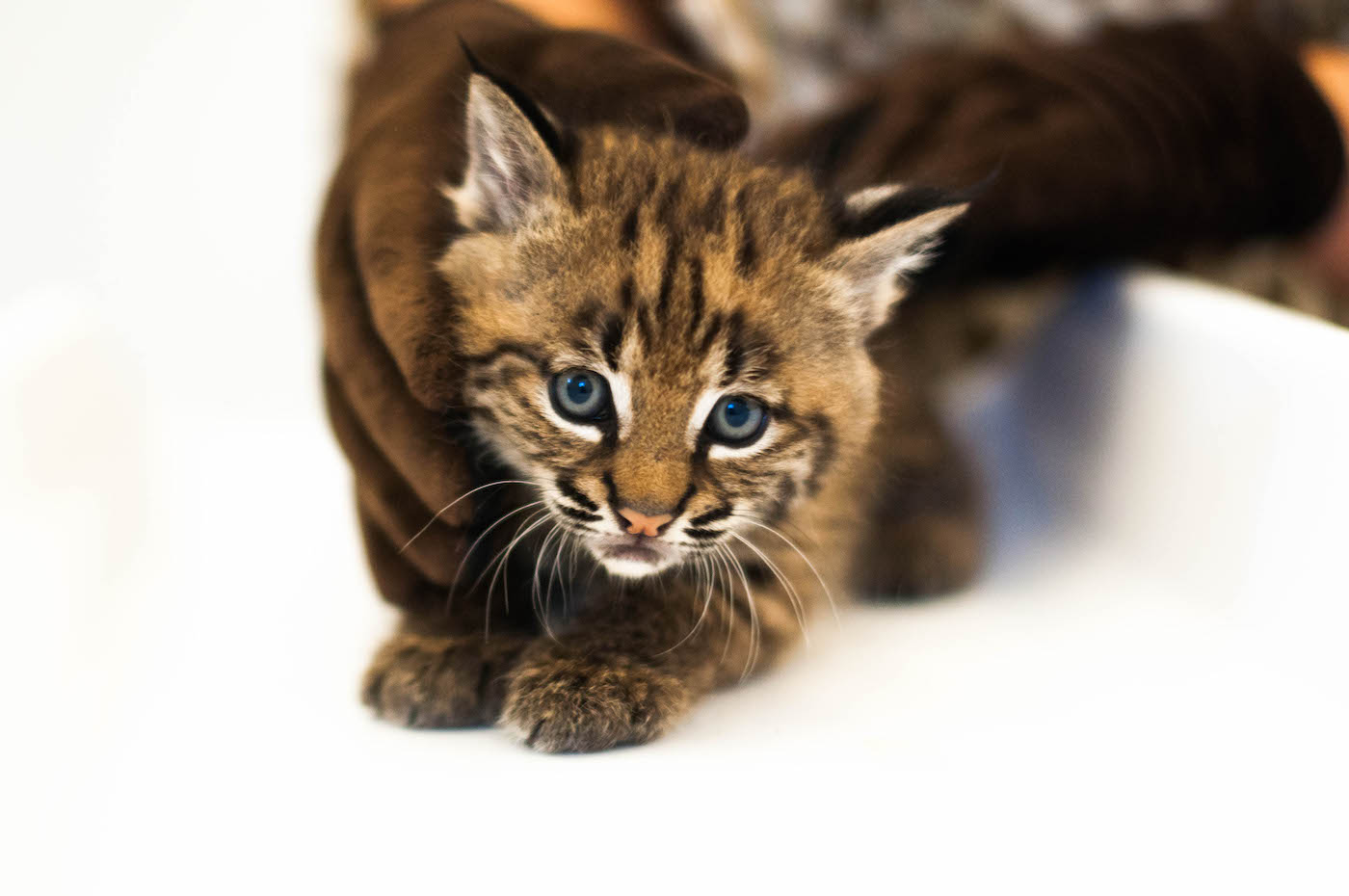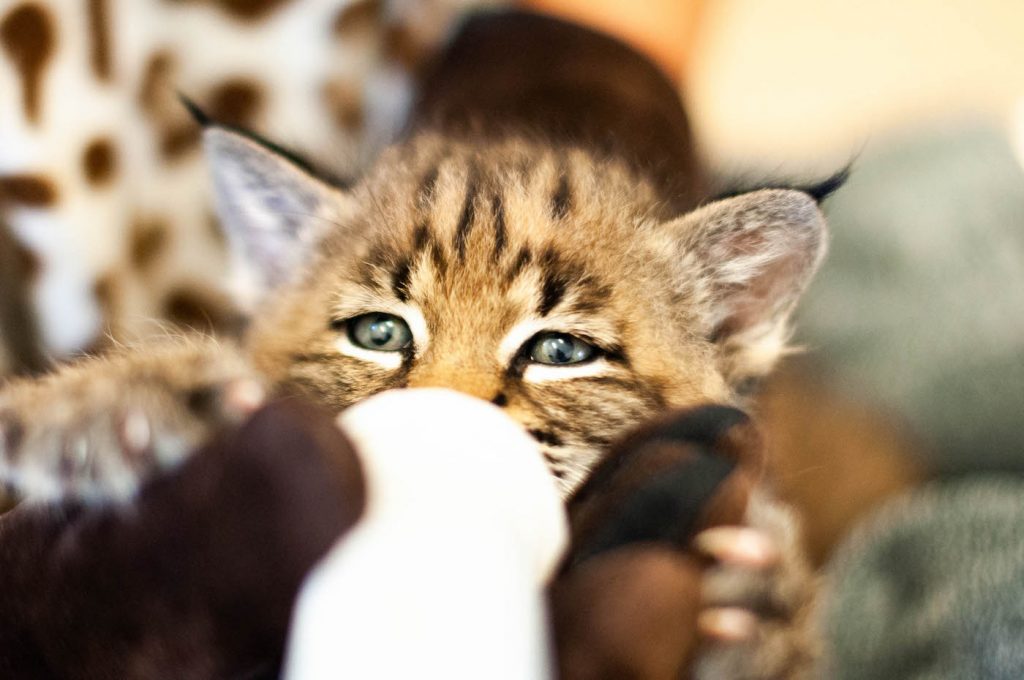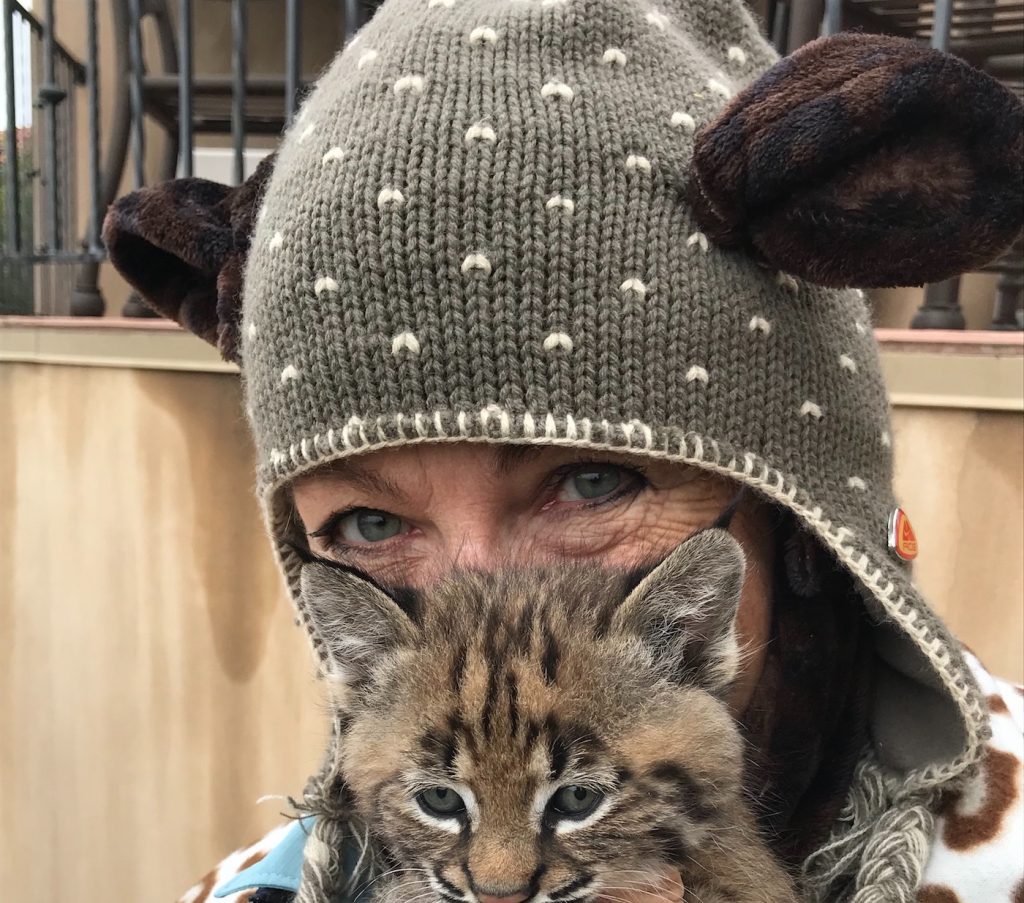Sycamore Canyon’s Baby Bobcat

On a balmy spring day in early April, a resident of Montecito walked outside to her back yard to hear small, mewing cries coming from under a bush on her property. To her surprise, she found a kitten crying and apparently abandoned right outside her house.
When the Santa Barbara Wildlife Care Network (SBWCN) first received a call about the incident from the reporting party, animal care staff were unsure if the kitten in question was domestic or wild. Multiple photos and a video were sent to Animal Care director Julia Parker. She determined that the feline in question was a baby bobcat.
SBWCN moved forward with step two in the management of the possibly abandoned infant. The staff patiently waited a total of seven hours in hopes that the mother bobcat would return to her baby’s side after a successful hunt or an excursion into its nearby surroundings. After all, the organization receives a large number of wild animals that are wrongly suspected of having been abandoned by their parents. Many ducklings, young songbirds, and mammals are mistakenly “rescued” and brought to SBWCN after being removed from an environment under the assumption that the animals have been left alone without a parent nearby. After hours of waiting in vain for the mother to return, dusk fell and a volunteer rescuer made the decision to take the bobcat into SBWCN’s care.
Intake of the bobcat kitten found the orphan to be male and quite young at about two weeks of age but otherwise healthy. Dana Fritzler, a primary volunteer who provides care and bottle-feeding to young and not yet weaned raccoons, stepped in to care for the cub. Because the patient was an unusual occurrence for the center, communication was made with other licensed rehabilitation organizations to ensure that the bobcat would be placed on a proper diet. Contact was also made with other wildlife centers across the region, in hopes of placing the bobcat into care with at least one other orphan currently in rehabilitation. With no initial luck in alternative placement options, Dana became the primary caretaker for the new patient.

During the first few hours of care, electrolytes were administered and a formula program was initiated in which the cub would be fed four times a day with a mixture of Esbilac (KMR), a kitten meal replacer, and whey protein. Bobcat orphans raised solitarily are at extreme risk for becoming habituated. Habituation is the behavioral adjustment of becoming non-reactive or even accustomed to human contact and socialization during an animal’s interaction with its human caretakers.
In the world of wildlife rehabilitation, habituation, and further imprinting – a time-sensitive stage of learning in which an animal will learn to associate humans with food, safety, and even a potential mate during sexual development – are potential risks that must be taken seriously and avoided during care for multiple species.
The Bobcat “Costume”

As the primary caregiver during the bobcat’s rehabilitation, Dana had the responsibility of ensuring that the bobcat did not become habituated or socialized during its first few weeks of its life. She did so by wearing a bobcat “costume” during all feedings and at times of stimulation for the kitten. This protocol followed recommendations from the Wildlife Education and Rehabilitation Center (WERC), guidelines that were implemented in 1994 to ensure non-habituation during rehabilitation.
Rather than acting solely as a caretaker, she essentially took on the role of being a bobcat surrogate mother, introducing play into the kitten’s routine. As in the natural setting, this is activity that is a prelude to teaching the juvenile cat how to properly hunt and kill prey.
During development in the wild, bobcat kittens will be weaned around the age of two months and begin the important stage of learning the survival instincts of hunting and foraging for food with their mothers’ guidance. Cubs will continue to hunt and live with their mother for a total of six months, near the end of which they will separate from their mother’s care and take on a new territory as a solitary predator.
At his ninth week in care at the Santa Barbara Wildlife Care Network, our bobcat was slowly being weaned off his formula diet and placed onto a solid diet of mice. The cub had received vaccinations for rabies and feline distemper and had been treated with external and internal anti-parasitics.
Last week, SBWCN successfully found a new home for the bobcat kitten at Fund for Animals Wildlife Center in Ramona, California. The organization currently has another bobcat kitten that, while a few weeks younger, will be paired with our nine-week-old orphan, and together, they will learn valuable lessons in hunting, socialization, and survival in the wild before being released back to the areas from which they were originally rescued. Release criteria for a bobcat in care includes the ability for the cat to maintain its weight on a sole diet of prey animals caught in its enclosure. Director Parker transferred the kitten to Fund for Animals on May 19.
The Santa Barbara Wildlife Care Network has been able to rehabilitate this patient, along with many others, due to the aid it receives from local veterinarians. We extend our sincere thanks to Dr. Stephany Lewis at California Wildlife Center who examined and administered vaccinations to the kitten. We also greatly appreciate the efforts of Dr. Sellers at Cat and Bird Clinic, Dr. Kuesis at La Cumbre Animal Hospital, and Dr. Haskell at Adobe Pet Hospital, who regularly examine patients that are in care.
While this bobcat is a unique patient for the entire SBWCN team, he is not alone in his journey to receive a second chance in the wild after care from the organization. In 2018, SBWCN has already welcomed into its arms more than 1,000 wild animals that have been abandoned, injured, or oil-impaired. The center averaged 20+ intakes of animals every day throughout May. To find out how to help support the work of Santa Barbara Wildlife Care Network by either volunteering or making a monetary donation, please visit their website at www.sbwcn.org.





